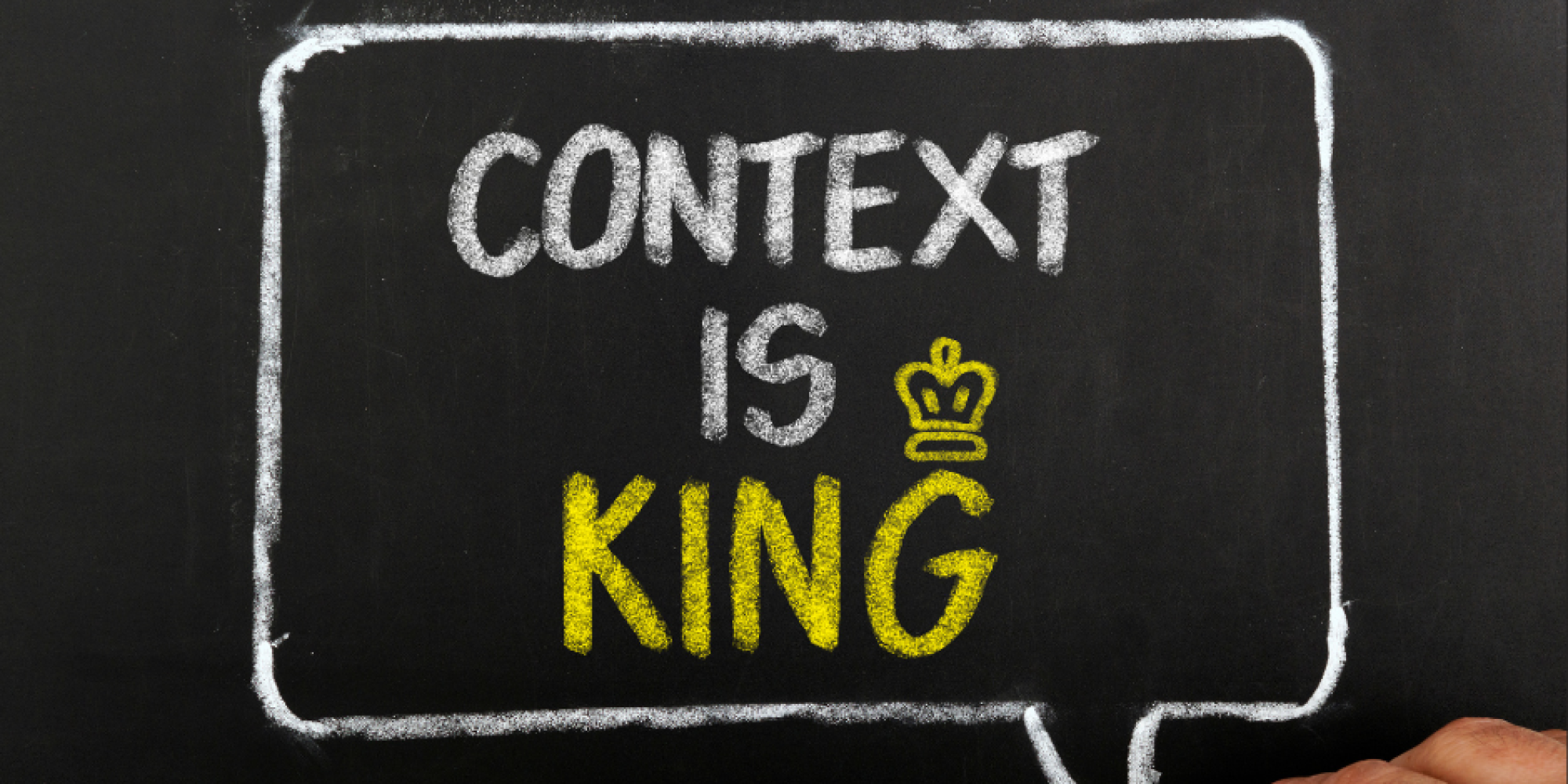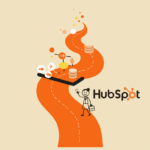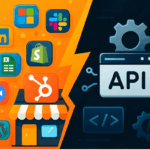
Content Isn't King, Context Is: Leveraging HubSpot for Better Content Delivery

The Royal Court Has a New Ruler
For decades, the famous marketing mantra coined by Bill Gates has reigned supreme: “Content is King.” This historical truth remains foundational—without quality content, you have nothing to say.
But today, we face a new challenge: content saturation. The internet is no longer a kingdom but a noisy, crowded marketplace. With short attention spans and perpetual “banner blindness,” even the best, most well-written content is often just shouting into the void. Great content is no longer enough to cut through the noise; it must be relevant.
We propose the new paradigm: If content is the king, then context is the throne that gives the king his power and influence. Without context, your king is powerless.
This article will explore why context is the critical factor in modern marketing success and provide a practical guide on how to use HubSpot’s powerful, integrated features to deliver perfectly timed, relevant, and highly personalized content to every prospect and customer.
What is Contextual Marketing? The Pillars of Relevance
Contextual marketing is the strategic discipline of delivering the right content to the right person at the right time on the right channel. It moves beyond generic campaigns to create a genuine, one-to-one conversation.
To achieve this, marketers must understand the 5 W’s of Context about their audience:
| Contextual Pillar | What Marketers Need to Know | HubSpot Data Source |
| Who they are | Demographics, firmographics, job title, and persona. | Contact/Company Properties |
| What they need | Their pain points, goals, and interests. | Page Views, Content Downloads |
| Where they are | Their current stage in the buyer’s journey. | Lifecycle Stage |
| When they are ready | The timing of their interactions and buying signals. | Recent Activities, Lead Score |
| How they engage | Their preferred communication channels. | Email Engagement Data, Chat |

The HubSpot Toolkit: Forging Your Crown of Context
HubSpot is uniquely positioned to be your central tool for contextual marketing because it functions as an all-in-one platform designed to gather and act on contextual data across all your touchpoints.
A. The Foundation: Data Collection and Segmentation
The journey starts with reliable data and the ability to organize it.
Contact Properties: These are the building blocks of the “who.” Use default and custom properties to build rich profiles. For example, knowing a contact’s
IndustryorSubscription Tieris vital context.Forms & Progressive Profiling: Avoid overwhelming a user with a 10-field form. HubSpot’s progressive profiling feature allows you to gather new, deeper information over time, creating a better user experience and a richer dataset without friction.
Smart Lists: These are the engine of segmentation. Create dynamic lists that update in real-time based on a combination of properties, behaviors (e.g., viewed the pricing page in the last 7 days), and engagement, ensuring your audience is always accurate.
B. The Engine: Automation and Workflows
HubSpot’s powerful workflows allow you to automate actions based on a contact’s behavior, ensuring the timing of your response is always perfect.
Behavioral Triggers: Use workflows to automate actions based on what a user does (clicks a link, visits a specific page, submits a form). This allows you to respond instantly to a moment of intent.
Lead Nurturing: Create tailored email sequences that guide prospects through the funnel based on their specific content downloads and stated interests, ensuring every touchpoint is relevant to their journey.
Internal Notifications & Task Creation: Use context to alert your sales team precisely when a lead is hot (e.g., immediately notify the contact owner when a contact visits the pricing page three times in one hour).
C. The Delivery: Personalization and Smart Content
This is where context directly influences what the customer sees.
Personalization Tokens: Go beyond inserting
[First Name]. Use personalization tokens to dynamically insert a contact’s company, job title, or specific custom property values into emails, landing pages, and CTAs, making the communication hyper-relevant.Smart Content: The ultimate contextual tool. HubSpot allows you to show different content, Call-to-Actions (CTAs), or even entire page sections based on critical context, such as:
Lifecycle Stage: Show a “Request a Demo” button to a Sales Qualified Lead (SQL).
List Membership: Show a specific offer to users who are members of your “Blog Subscribers” list.
Device or Country: Show different contact information or localized currency based on device or geographical location.
Smart Send Times: Leverage HubSpot AI to analyze historical data and send emails when a specific contact is most likely to engage, maximizing your open and click-through rates.
Context in Action: Practical HubSpot Use Cases Across Channels
| Channel | Contextual Tactic | Benefit |
| Your Website | A first-time visitor sees a “Top of Funnel” eBook offer, while a returning lead in the “Consideration” stage sees a “Request a Demo” CTA on the same homepage banner (using Smart Content). | Reduces friction and ensures the next step is relevant to their stage. |
| Email Marketing | A contact downloads an eBook on “Social Media Marketing.” A workflow automatically follows up with a relevant case study and an invitation to a webinar on the same topic, rather than a generic newsletter. | Keeps the conversation focused and guides the prospect down a highly relevant path. |
| Landing Pages | A known contact clicks on a link to a new offer. The form on the landing page is pre-populated with their known information (using Progressive Profiling) and only asks 1-2 new questions. | Boosts conversion rates by eliminating unnecessary data entry. |
| Conversational Marketing | A chatbot on your pricing page recognizes a high-value lead (based on a company size property) and immediately offers to connect them with a live sales representative instead of the standard bot flow. | Prioritizes hot leads and provides a faster, more relevant service experience. |
Measuring the Reign: Proving the ROI of a Context-First Strategy
The beauty of HubSpot is its ability to close the loop and directly measure the impact of your contextual efforts. If you can’t measure it, you can’t prove it.
Key Metrics to Track in HubSpot:
Engagement Rates: Directly compare the open and click-through rates of your generic emails versus personalized (contextual) emails. The personalized version should perform significantly better.
Conversion Rates: Use A/B testing on static CTAs versus Smart CTAs to prove that showing the right message leads to higher conversion rates.
Sales Velocity: Track how much more quickly leads move through lifecycle stages (Sales Cycle Length) when they are enrolled in contextual nurturing workflows compared to generic ones.
Attribution Reports: Connect specific contextual campaigns (like a Smart CTA driving a demo request) directly to closed-won revenue, proving the ROI of your contextual efforts.
Long Live Content, Ruled by Context
Content remains critically important, but in the modern digital world, its success is entirely dictated by the context in which it is delivered. The goal is to stop publishing broadcasts and start facilitating one-to-one conversations.
The good news is that HubSpot provides an integrated toolkit—from contact properties and smart lists to automation and smart content—that transforms marketing from a series of disconnected campaigns into a unified, powerful, and contextual customer experience.
Stop thinking only in terms of content calendars and start thinking in terms of customer journeys. Block off some time this week to audit your main landing pages and ask: “Am I showing this person the content that is most relevant to them, right now?”
Ready to make your content smarter and drive higher conversions?
Resources:
HubSpot Knowledge Base – Smart Content: https://knowledge.hubspot.com/smart-content
HubSpot Knowledge Base – Workflows (Behavioral Triggers): https://knowledge.hubspot.com/workflows
HubSpot Academy – Contextual Marketing/Personalization: https://academy.hubspot.com/ (Search for “Personalization” or “Smart Content”)
HubSpot Blog – Content Strategy: https://blog.hubspot.com/marketing/content-strategy



